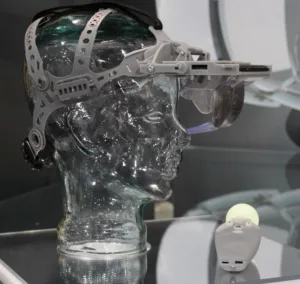What’s the most expensive element of a head-mounted display? In most cases, it’s the imager. If you want a high resolution imager, the costs goes up. Want a stereoscopic 3D display? That doubles the imager costs.
At CES 2015, we ran across Seebright [http://seebright.com/], a California-based startup, whose founders think that they have a better idea. Their Seebright Wave System simply uses the display on your smartphone as the imager for their system. As a result, the most expensive components are the optics, which cost far less than a display and controlling circuitry.
The product is basically a plastic headband and framework to support a smartphone horizontally in front of your forehead. It will be available with two sets of optics. One is transparent so that you can see the space around you at the same time that you view the content on the display. This is suitable for augmented reality applications (AR). The other set will not transmit light from your surroundings, which will create a more immersive experience for virtual reality (VR) applications.
In either case, the display on the smartphone can be split into two regions, each half sending a different image to each eye of the wearer. This allows the application to create stereoscopic 3D images.
The beauty of this approach is that you get all the computing power, connectivity, and sensors contained in the smartphone in the bargain. This means that applications can access the Internet for data on the fly, and can exchange data with other devices through Bluetooth and WiFi wireless connections. The GPS and motion sensors in the phone can be used for location and head-tracking functions, which are important in VR and AR applications.
The company has created a Bluetooth-enabled controller that can be used in three-dimensional space to interact with applications. They plan to launch a Kickstarter campaign soon to help fund the development of the final product.

